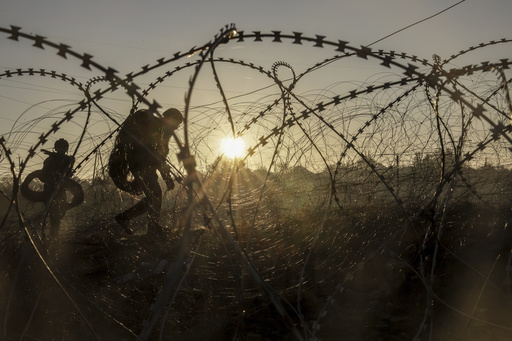
PRAGUE — A London-based think tank has reported that European countries have enhanced their military readiness in light of Russia’s annexation of Crimea in 2014 and its full-scale invasion of Ukraine in 2022; however, significant strides still need to be made to effectively address the ongoing threats from Russia.
The findings were presented in a report by the International Institute for Strategic Studies on the opening day of a three-day meeting in Prague that focuses on military capabilities across Europe and the transatlantic alliance.
According to the report, “NATO has notably increased its objectives related to deterrence and combat readiness, while European nations have worked to remedy essential gaps in capabilities and preparation.” It went on to highlight that, “Given decades of neglect and insufficient funding, there is still much to achieve, and the results have been inconsistent.”
This report was unveiled as European leaders, including NATO Secretary-General Mark Rutte, reevaluated their transatlantic partnerships in Budapest, Hungary, contemplating a more stable relationship during Donald Trump’s potential second presidential term. There is optimism that this administration might foster unity on issues concerning Russia, in contrast to the challenges experienced during his first term.
Throughout his campaign, Trump indicated possible drastic shifts in relations with Europe, earmarking concerns from a potential trade conflict with the EU to altering NATO commitments and rethinking support for Ukraine in its ongoing conflict with Russia.
During his first term from 2017 to 2021, Trump advocated for increased defense spending among NATO’s European members, urging them to allocate at least 2% of their gross domestic product towards defense and to decrease reliance on American military support. In this context, some advancement has been noted, with projected defense expenditures by NATO’s European members set to be 50% higher in 2024 compared to a decade ago, according to the report.
Nonetheless, challenges persist, as indicated by the IISS, which pointed to uncertainties in public funding that, “ultimately limits the defense sector’s confidence to invest.” The report also mentioned that “regulatory challenges and the enforcement of environmental, social, and governance mandates will continue to impede investment.”
Following 2022, Europe’s defense sector has seen increased production in specific military products, particularly those in high demand by Ukraine, including air defense systems and artillery. However, European nations have also sent their own military assets, like F-16 fighter jets, to Ukraine and still rely on U.S. support for various critical military components, while also looking towards Brazil, Israel, and South Korea to fulfill their defense needs amid insufficient domestic production capacity.
The report noted that competition for essential materials and skilled workers between the defense sector and civilian industries poses additional challenges. Furthermore, it highlighted a worrying trend of insufficient personnel within many European militaries. A significant takeaway from Russia’s invasion of Ukraine is the understanding that nations must maintain robust troop numbers to effectively counter enemy assaults and to ensure sufficient forces are available to recover from combat losses.
By this measure, many European military forces are currently under-staffed, indicating that there is substantial work ahead for Europe to modernize and bolster its defense capabilities. The report concludes that, “Forces, budgets, and defense industry capabilities were cut due to previous political choices. Now, those same governments must rekindle their commitment to defense and security, ensuring consistent policy focus and investment to align with the current strategic landscape in Europe.”
